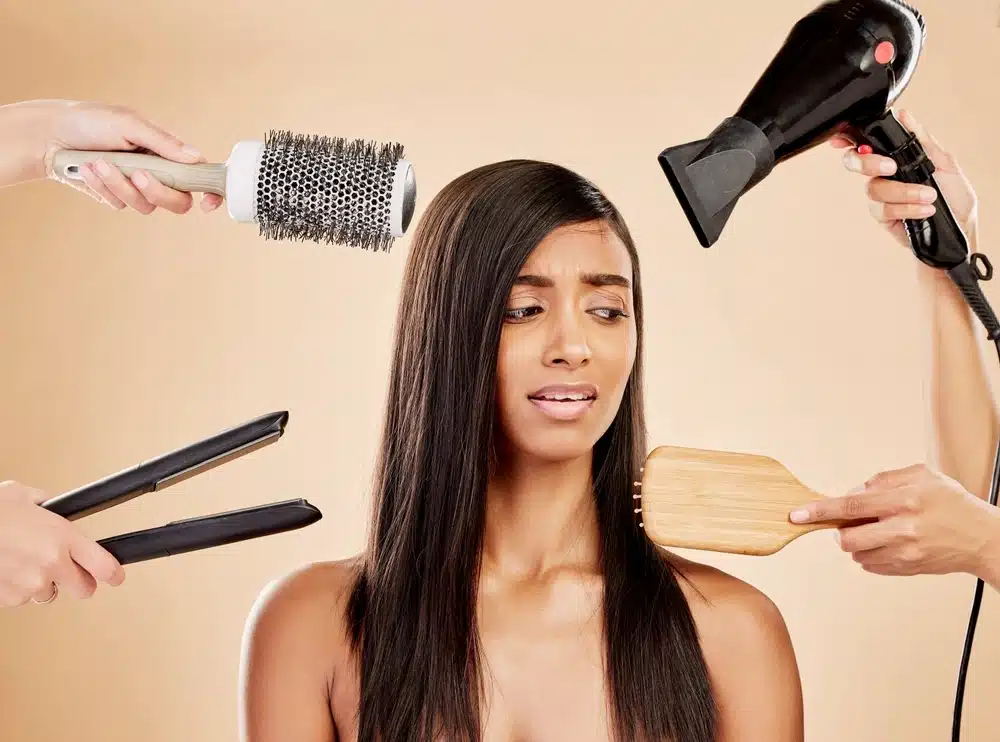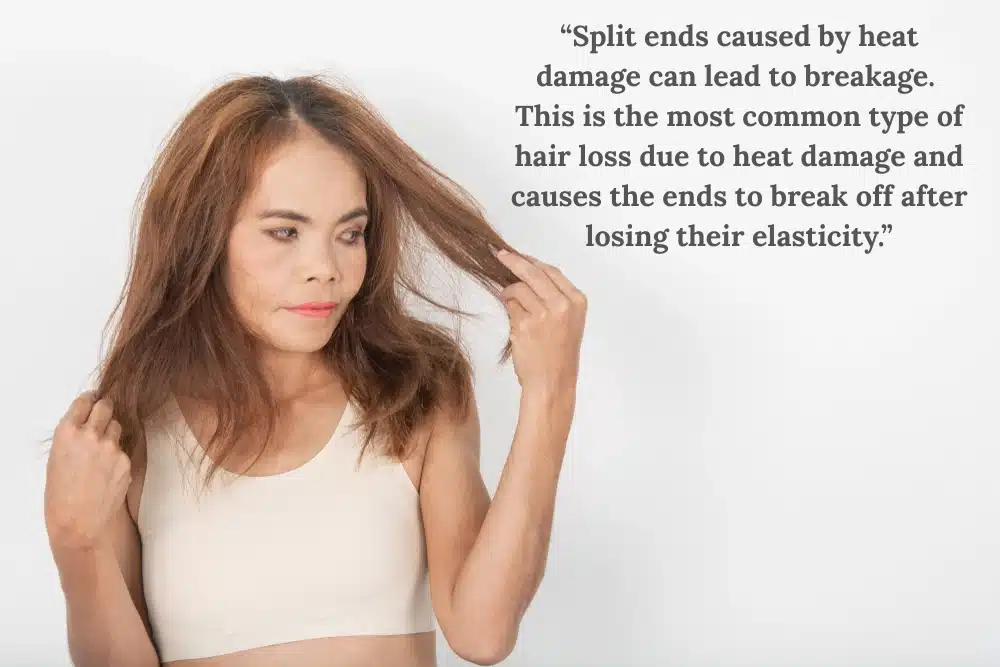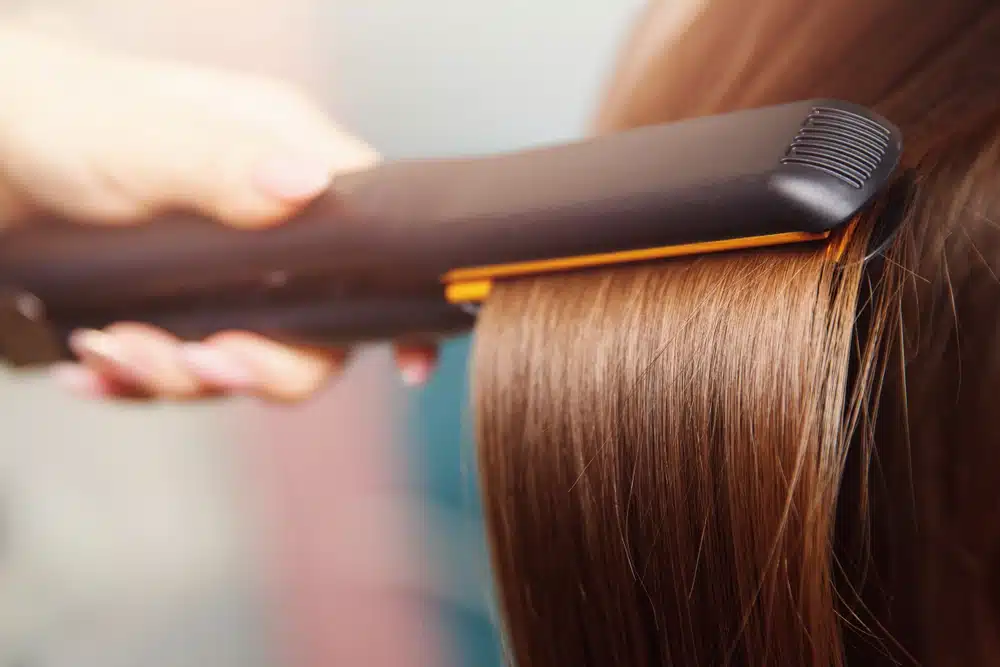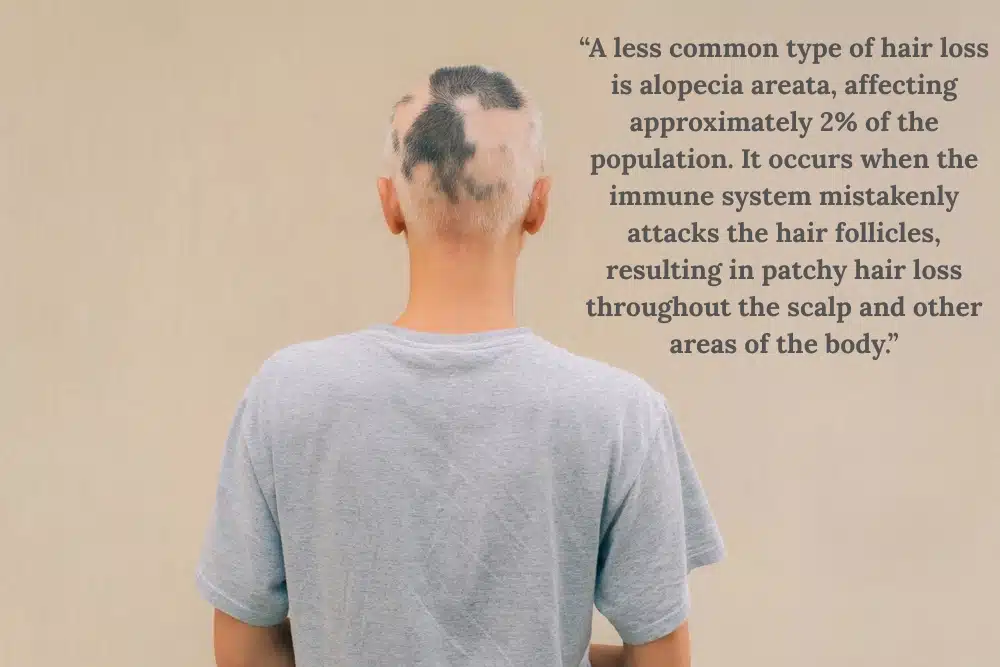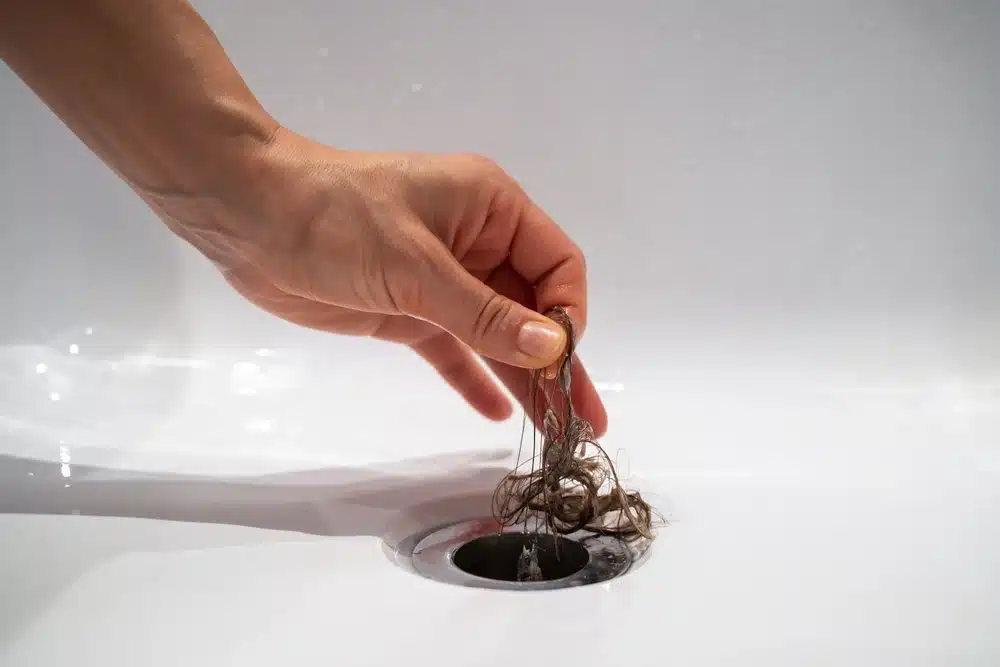Hair plays a significant role in how people perceive themselves and others. It protects the scalp, holds cultural significance, and is often associated with health and beauty.
It makes sense, then, that there are a variety of ways to style hair, many of which involve hair straighteners, blow dryers, and curling irons. Unfortunately, this can damage the hair over time.
The question is – can heat damage cause hair loss? Can you repair heat damaged hair? Find out all you need to know in this guide.
What is Heat damaged Hair?
When speaking about hair, heat damage refers to any damage caused by heat. The most common heat styling tools are flat irons or straighteners, curling irons, hair dryers, and hot brushes; however, prolonged sun exposure can also cause this condition.
When hair becomes heat damaged, it affects the cuticle, the outer layer of the hair shaft that protects the inner layers. It can lead to moisture loss, the breakdown of keratin, split ends, and breakage, all of which are noticeable to the eye and the touch.
So – Can Heat Damage Cause Hair Loss?
Unfortunately, yes, exposing your hair to heat too frequently can contribute to hair loss.
Heat damage typically does not harm the hair follicles (although it can if heat styling tools are used for prolonged periods and aimed at the scalp). Instead, the most common type of hair loss caused by heat is breakage.
Heat damaged hair often results in split ends and weak strands, making them more susceptible to breakage. It leads to hair thinning and a general decrease in hair thickness and density. When this happens, many people consider hair loss treatment.
Can Heat damaged Hair Be Reversed?
No. There is no way to reverse heat damaged hair, as the hair cuticles have been damaged completely. The only truly effective way to treat heat damaged hair is to prevent further damage, use treatments specifically designed for heat damage, and consider trimming or cutting some length off your strands.
If you want to keep on top of your hair’s health and length, you can use a hair track app.
The 5 Signs of Heat Damaged Hair
Do you look at your strands and think they look a little lifeless? It could be the flat iron or curling tongs that are the culprit. If you’re unsure whether you have heat damaged hair, these are the signs to look for.
- Split Ends
One of the most obvious signs of heat damage is split ends. Split ends (also known as trichoptilosis) occur when the hair shaft splits at the end of the hair and occurs when the hair cuticle is damaged (in this case, because of heat). Some signs of split ends include frayed ends, tangling, and frizz.
- Dry, Dull Hair
Cuticle damage also leads to dry, dull hair. When you think of healthy hair, you likely imagine lovely, shiny tresses – this is essentially the opposite of that. It will look dull, and the colour won’t pop as it once did.
- Breakage
Split ends caused by heat damage can lead to breakage. This is the most common type of hair loss due to heat damage and causes the ends to break off after losing their elasticity. You can easily test if you’re hair is experiencing breakage by pulling on a couple of hair strands – strong, healthy hair should stay intact, whereas damaged hair will break off too easily.
- Lots of Knots
If your hair is usually quite smooth but now has a lot of knots and tangles, that’s a clear sign of heat damage. The reason this happens is due to the shingles that make up the hair cuticles. When the cuticle (and, in turn, the shingles) become damaged, the shingles stick out rather than lying flat, meaning they are more likely to tangle up with other strands, causing knots.
- A Change in Texture
Heat damage can also lead to a change in your hair’s texture. Typically, heat damaged hair will not be as springy and bouncy as healthy hair. If you run your fingers through the strands, it may feel rough, dry, and coarse.
Preventing Heat Damaged Hair
Prevention is always the best strategy for maintaining your locks. Here are some tips to prevent heat damaged hair.
Avoid the Heat Styling Tools
Whenever possible, avoid using heat styling tools. There are plenty of no-heat ways to style your hair; for example, you could try the heatless curls with socks! [1] If you heat style your hair very often, even taking a few days off from the heat tools per week can be enough to make a difference.
Use a Heat Protectant
Every time you use heat tools on your hair, make sure to use a heat protectant beforehand. These typically come in spray bottles, so you just need to spritz your hair all over before you start heat styling. It’s a way to protect your hair from heat damage as much as possible. Research different brands and the type of protection they offer, as some are more effective than others.
Avoid High Temperature Settings
Very high heat is the biggest cause of damage. Many modern heat styling tools have adjustable settings, allowing you to lower the temperature to a more suitable level. Often, you can achieve the same style when using temperatures of 160-180 degrees Celsius as when using temperatures of 200 degrees Celsius or higher.
Don’t Use Flat Irons or Curling Irons on Wet Hair
Using heat styling tools on wet hair can increase the damage. So, try to get your hair as dry as possible before using any of these tools, including the hair dryer.
Air Dry When You Can
Air drying your hair is the best way to minimise damage. If you must use a hair dryer to avoid unkempt hair, wait until your hair is around 90% dry before using the dryer.
Protect Hair from the Sun
While most heat damage to the hair comes from styling tools, the sun can also be a contributing factor. As such, protect your hair from the sun, especially on hot, sunny days. Wear hair products that contain SPF and wear a hat when you’re in direct sunlight.
Invest in a Good Hair Care Routine
A good hair care routine can go a long way toward protecting your hair. Keep your hair nice and moisturised by using hair oils and deep conditioners. You should also invest in a high-quality brush and brush your strands gently to avoid breaking your strands.
Treating Heat Damaged Hair
While you cannot reverse or fully repair heat damaged hair, there are some ways to treat it that will make your hair smoother and more manageable.
- Get Regular Trims: Since heat-damaged hair is not reversible, it’s essential to get regular trims to remove the damaged ends, allowing new, healthy hair to grow through.
- Replenish Moisture: One thing heat damaged hair needs above anything else is moisture. Use deep conditioning treatments, leave-in conditioners, hair masks, hydrating shampoos, and oils to give your hair some life.
- Use a Protein Treatment: One way to rebuild hair structure is by using a protein treatment. It’s essential to exercise caution when doing this, as excessive use can actually cause more harm. You should only use a protein treatment every couple of weeks.
- Be Patient: When repairing heat damaged hair, the key is to regrow new, healthy locks, which takes time. Hair typically only grows a centimetre or two every month, so you will need to be patient.
Is Something Else Causing Your Hair Loss?
Too much heat damage can cause the hair to break off. However, if you are experiencing hair loss from your scalp, the chances are that something else is going on. Here are some more common causes:
Male or Female Pattern Hair Loss
This is also called androgenetic alopecia and is completely hereditary. In men, this hair loss often targets the hairline and the crown, whereas it causes more all-over thinning in women. It’s very common and there are ways to treat it, such as using medications like minoxidil or investing in a surgical procedure like a hair transplant.
Hormonal Imbalances
Hormonal changes can cause hair loss. For example, pregnancy, childbirth, and menopause can lead to hair loss, as can having an overactive or underactive thyroid.
Alopecia Areata
A less common type of hair loss is alopecia areata, affecting approximately 2% of the population. [2] It occurs when the immune system mistakenly attacks the hair follicles, resulting in patchy hair loss throughout the scalp and other areas of the body.
Nutritional Deficiencies
Several nutritional deficiencies contribute to hair loss. Being low in iron, vitamin D, or vitamin B3 can cause your hair to thin or fall out.
Telogen Effluvium
Telogen effluvium is a type of hair loss caused by psychological or physical stress. It can happen after a period of intense mental stress or after something like major surgery. It is usually temporary, so the hair should grow back.
Does Heat Damage Cause Hair Loss: Final Thoughts
Having dry, dull, frizzy hair from heat damage is annoying and can even cause the hair to break off. While there is no way to reverse this damage, you can take steps to prevent further damage while treating your hair well.
If you’re more concerned about hair loss, you may need a more targeted approach, such as a hair transplant. To see what a FUE hair transplant can do, check out our patients gallery.
Sources:
- https://www.marieclaire.com/beauty/heatless-curls-with-socks/
- https://www.naaf.org/alopecia-areata/#:~:text=Alopecia%20areata%20is%20a%20surprisingly,people%20in%20the%20U.S.%20alone.
